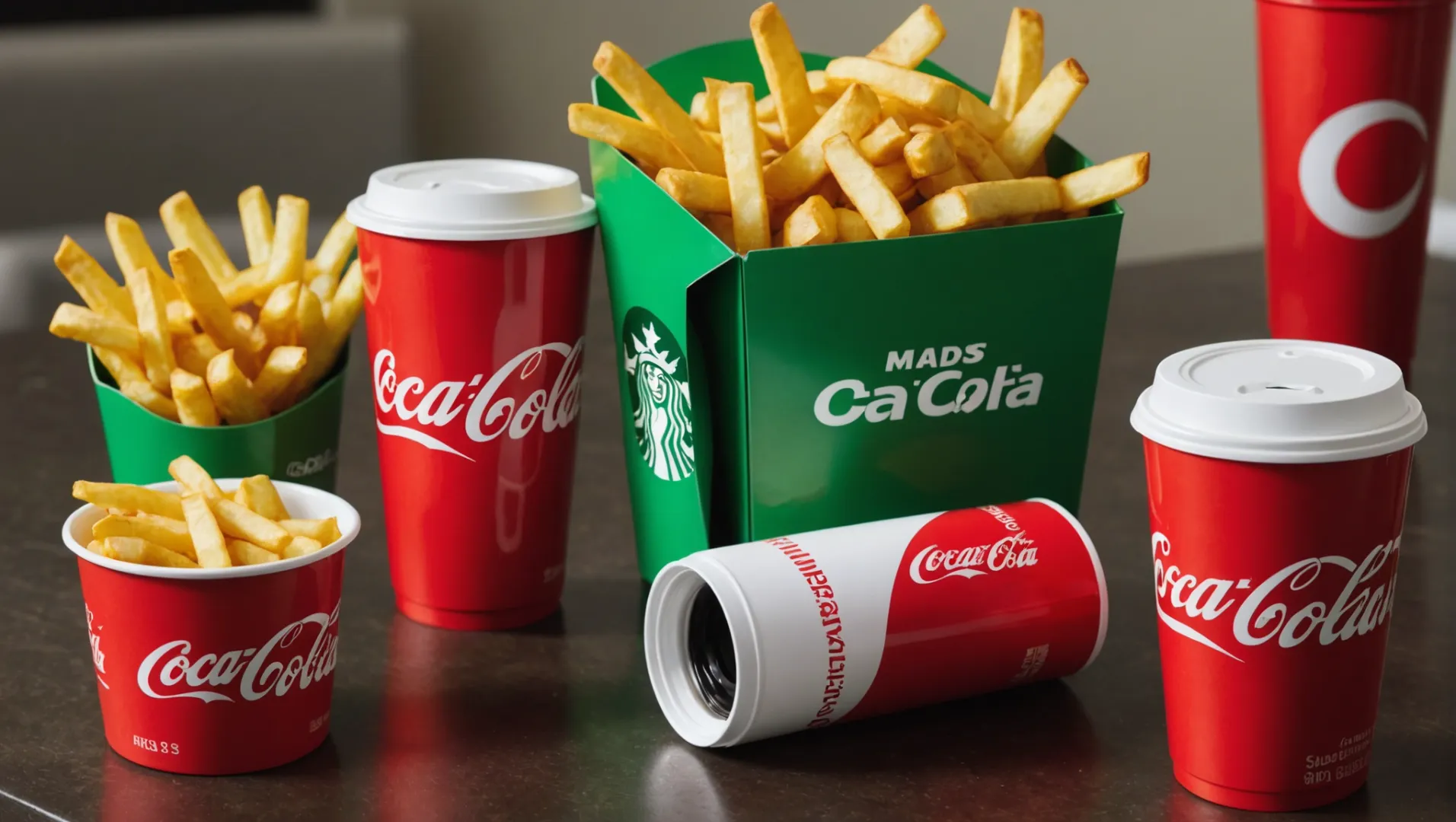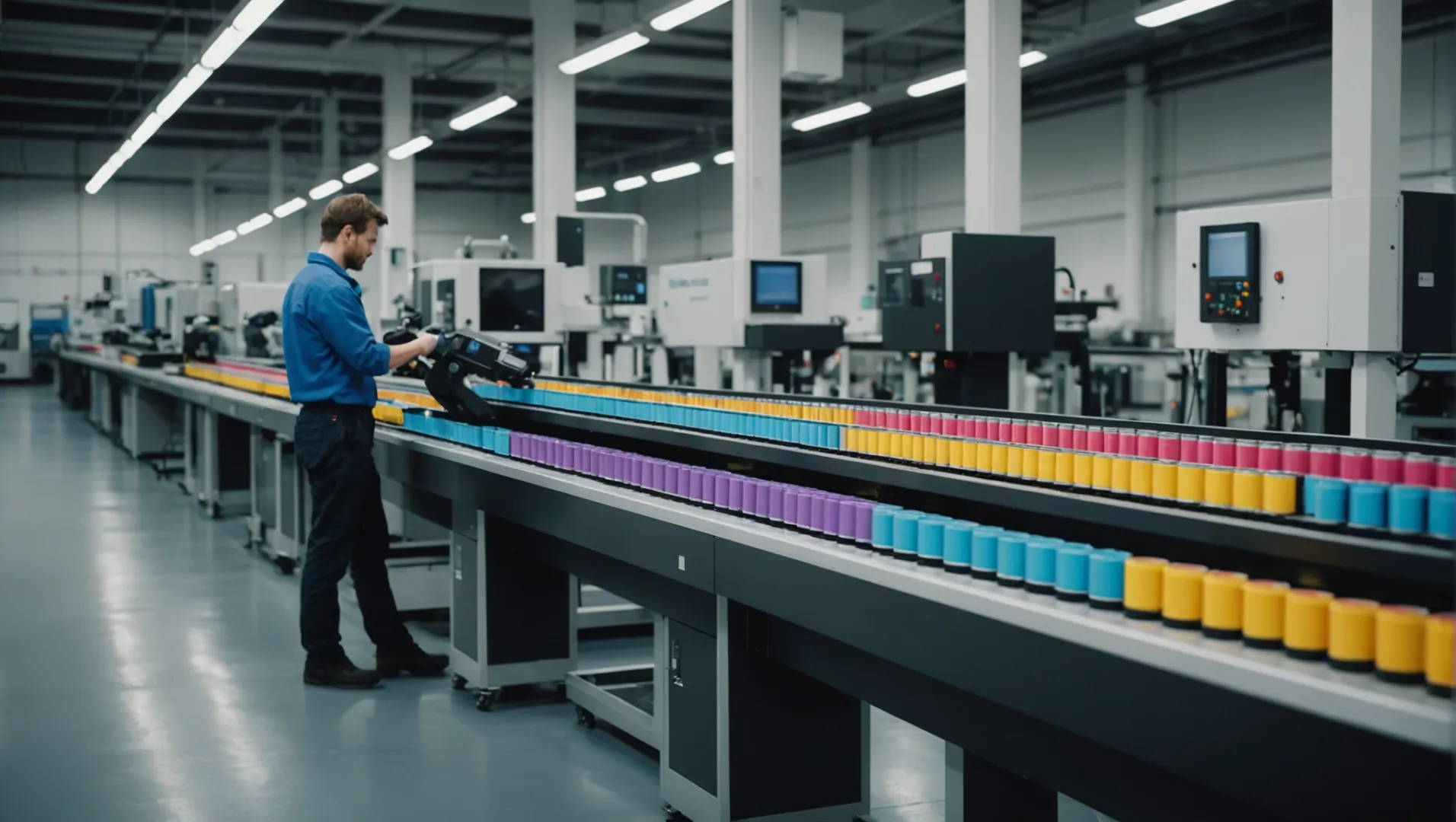
In the fast-paced world of manufacturing, every detail counts—especially when it comes to color. Let’s dive into why color consistency is not just a detail, but a cornerstone of quality in injection molded products.
Color consistency in injection molded products ensures visual appeal, enhances brand image, supports functional performance, and optimizes production management. Inconsistent coloration can detract from a product’s quality and marketability, affecting consumer perception and brand loyalty.
But understanding the basic importance of color consistency is just the beginning. Let’s explore how maintaining consistent color can elevate product quality and transform your brand’s reputation.
Color consistency affects product marketability.True
Inconsistent colors can detract from a product's appeal, reducing marketability.
How Does Color Consistency Affect Consumer Perception?
Color plays a pivotal role in shaping consumer perceptions and purchasing decisions, particularly in the realm of injection molded products.
Color consistency affects consumer perception by enhancing visual appeal and brand recognition. Inconsistent colors can undermine quality perception and trust in a brand.

The Visual Impact of Color Consistency
Visual appeal is one of the primary factors influencing consumer purchasing decisions. Injection molded products with consistent colors exude harmony and sophistication, aligning with the high-quality expectations consumers have for these products. This is especially crucial in sectors like electronics and automotive, where a uniform appearance1 is often synonymous with premium quality.
Inconsistent colors, on the other hand, can create a perception of disarray, leading to a diminished attractiveness of the product. Imagine selecting a smartphone with a mismatched casing color; it not only looks less appealing but also suggests potential quality control issues.
The Role of Color in Brand Image
Color is a powerful tool for establishing and maintaining brand identity. Iconic brand colors, such as Coca-Cola’s red or Starbucks’ green, are instantly recognizable and help reinforce brand loyalty. Consistent use of color in products strengthens this association, reinforcing the brand’s presence in consumers’ minds.
For companies producing injection molded products, maintaining color consistency is crucial for brand recognition2. Any deviation can dilute the brand’s image, suggesting a lack of attention to detail and potentially eroding consumer trust.
Functional Implications of Color Consistency
Beyond aesthetics, color consistency is vital for functional performance. In products requiring assembly, such as automotive parts, mismatched colors can signal poor manufacturing practices and affect product integrity. Consistent color ensures seamless assembly and enhances the product’s durability.
Furthermore, for products with optical requirements like lenses or screens, color consistency impacts optical performance. Variations can lead to uneven light transmission or distorted visual displays, negatively affecting user experience.
Insights from Industry Experts
Industry experts underscore the importance of maintaining color consistency not just for consumer satisfaction but as a measure of stringent quality control. By incorporating tools like colorimeters during production, companies can monitor and adjust color parameters to meet high standards consistently.
Moreover, experts advocate for a proactive approach in managing color consistency starting from raw material selection through to final product inspection. This comprehensive approach ensures that products not only meet aesthetic expectations but also fulfill their intended functional roles efficiently.
By prioritizing color consistency, manufacturers can enhance consumer perceptions, fostering greater trust and loyalty towards their brands.
Inconsistent colors suggest poor quality control.True
Inconsistent colors can indicate a lack of attention to manufacturing details.
Color consistency is irrelevant in brand recognition.False
Color consistency reinforces brand identity, making it crucial for recognition.
What Role Does Color Play in Brand Image and Recognition?
Color is a powerful tool in branding, influencing perception and fostering recognition. Let’s delve into its impact.
Color plays a pivotal role in brand image by enhancing recognition, conveying values, and differentiating from competitors. Consistent use of color strengthens brand identity, ensuring consumers can easily identify and trust the brand across various platforms.

Enhancing Brand Recognition through Color
The consistent use of color in branding significantly enhances recognition. For instance, when people see the iconic red of Coca-Cola or the distinctive green of Starbucks, they immediately associate these colors with their respective brands. This immediate recognition is due to the psychological impact3 colors have on memory, enabling consumers to quickly identify a brand in a crowded marketplace.
-
Visual Memory Trigger: Colors act as visual triggers that help consumers remember brands more efficiently. Research indicates that color increases brand recognition by up to 80%. This means that consistent color usage can make a brand more memorable and distinguishable from its competitors.
-
Emotional Connection: Colors also evoke emotions, which can further solidify a consumer’s connection to a brand. For example, warm colors like red and yellow can evoke feelings of excitement and warmth, while cooler tones like blue and green can convey calmness and trust.
Conveying Brand Values
Colors are not just about aesthetics; they communicate a brand’s values and personality. For example, luxury brands often use black or metallic shades to convey sophistication and exclusivity. In contrast, eco-friendly brands might use greens and earth tones to highlight their commitment to sustainability.
- Brand Storytelling: Through strategic color choices, brands can tell their story without words. A company focused on innovation might opt for bright, bold colors to represent creativity and forward-thinking. This storytelling aspect of color ensures that every interaction a consumer has with the brand—whether through packaging, advertising, or digital presence—aligns with the brand’s core values.
Differentiation in the Market
With thousands of products vying for attention, color can be an effective differentiator. It allows brands to stand out on crowded shelves and in online marketplaces.
| Brand | Dominant Color | Market Perception |
|---|---|---|
| Coca-Cola | Red | Bold, Energetic |
| Starbucks | Green | Refreshing, Ethical |
| McDonald’s | Yellow | Cheerful, Family-Friendly |
| Apple | White/Silver | Minimalistic, Innovative |
- Unique Identity: By choosing a unique color palette, brands can carve out a niche and ensure they are easily identifiable even in competitive markets.
In conclusion, color is an integral aspect of branding that goes beyond mere visual appeal. It plays a vital role in enhancing recognition, communicating values, and differentiating brands in a crowded marketplace. By maintaining color consistency4, companies can ensure that their brand image remains strong and memorable across all platforms.
Color increases brand recognition by up to 80%.True
Research supports that consistent color use enhances brand memory.
Luxury brands often use green to convey sophistication.False
Luxury brands typically use black or metallic shades for exclusivity.
Why is Uniform Color Crucial for Functional Performance?
In the world of precision engineering, uniform color in injection molded parts goes beyond aesthetics, impacting the very functionality of the products.
Uniform color in injection molded products ensures seamless assembly compatibility and optimal optical performance, crucial for functional integrity. Inconsistent colors can hinder these aspects, leading to performance issues.

The Importance of Color in Assembly Compatibility
Uniform color is critical for assembly compatibility5, especially in complex products that integrate multiple parts. Imagine assembling an automobile where each component varies slightly in shade. Such discrepancies can lead to misalignment during assembly, resulting in uneven gaps that compromise structural integrity and longevity. Consistent coloring ensures parts fit together as intended, maintaining the product’s performance over time.
For instance, in the automotive industry, the seamless integration of colored components is essential not just for aesthetics but also for ensuring that each part aligns perfectly with adjacent pieces, contributing to overall vehicle reliability.
Impact on Optical Performance
In products where optical clarity and precision are paramount, like transparent lenses or screen covers, color consistency is non-negotiable. Inconsistent coloration in these components can result in distorted light transmission or color inaccuracies, impacting the device’s efficacy and user experience.
Consider a smartphone screen: even minor color variations can lead to uneven brightness or tint issues, affecting image quality. Similarly, camera lenses with inconsistent color might cause color aberrations, affecting photo clarity.
Ensuring Functional Integrity through Quality Control
Maintaining uniform color also ties into rigorous quality control processes6. By using tools like colorimeters, manufacturers can detect deviations early in the production line, allowing for immediate corrective measures. This proactive approach not only preserves functional integrity but also prevents costly rework or scrapping of parts.
Incorporating such quality checks as part of standard operating procedures aids in minimizing errors and upholding product standards consistently across production batches.
Cost Efficiency and Production Optimization
Uniform color helps streamline production by reducing the need for manual sorting or reworking of parts due to inconsistencies. This not only cuts down on labor costs but also optimizes material usage, fostering an efficient manufacturing environment.
Moreover, achieving color uniformity allows for smoother transitions to automated production systems, further enhancing operational efficiency7 and reducing downtime caused by manual interventions.
Uniform color ensures assembly compatibility.True
Consistent color aids in precise part alignment, enhancing structural integrity.
Inconsistent colors improve optical performance.False
Color variations can distort light transmission, reducing optical clarity.
How Can Manufacturers Achieve Consistent Color in Production?
Ensuring consistent color in manufacturing requires precise control over materials and processes. But how can manufacturers achieve this consistency effectively?
Manufacturers achieve consistent color in production by controlling raw materials, optimizing process parameters, and implementing rigorous quality checks. Utilizing technology like spectrophotometers and standardizing procedures also play crucial roles in maintaining color uniformity across products.

Control of Raw Materials
Achieving color consistency begins with selecting and controlling the raw materials used in production. Manufacturers must ensure that pigments and resins meet strict specifications to avoid variations in color.
- Supplier Quality: Choose reliable suppliers who provide materials with consistent quality.
- Batch Testing: Implement batch testing protocols to detect any discrepancies in material color before production.
- Storage Conditions: Maintain optimal storage conditions for raw materials to prevent degradation that could affect color.
Optimization of Process Parameters
The production process itself plays a significant role in maintaining color consistency. By optimizing various parameters, manufacturers can minimize variations.
- Temperature Control: Ensure that molding machines operate at the correct temperatures to prevent color shifts.
- Mixing Procedures: Standardize mixing procedures to ensure uniform distribution of pigments.
- Cycle Times: Monitor and adjust cycle times to maintain consistent product appearance.
Implementation of Advanced Technology
Modern technology offers tools that can significantly enhance color consistency.
- Spectrophotometers: These devices measure the color of samples accurately, helping to detect even slight deviations from the desired shade.
- Automated Color Matching Systems: Use automated systems to adjust formulations and achieve precise color matching across batches.
Rigorous Quality Checks
Regular quality checks throughout the production process ensure that any deviations are caught early, minimizing rework and waste.
- In-Line Inspections: Conduct inspections during production to quickly identify any issues.
- Color Standards: Use established color standards as benchmarks for comparison during inspections.
By implementing these strategies, manufacturers can maintain the visual appeal8 and brand image9 of their products, ultimately enhancing their market competitiveness. Adopting a holistic approach to color consistency not only improves product quality but also builds consumer trust in the brand. To learn more about enhancing functional performance10 through uniform color, continue exploring best practices in the field.
Spectrophotometers ensure color consistency in production.True
Spectrophotometers accurately measure colors, detecting deviations.
Ignoring raw material quality affects color consistency.True
Poor quality materials lead to color variations in products.
Conclusion
Prioritizing color consistency boosts product quality and enhances brand reputation, leading to improved customer satisfaction and market success.
-
Learn why consistent appearance is crucial for electronic products.: To create uniform LED lighting, it’s important to select LEDs that emit light over a wide angle. This ensures that the light spreads evenly and creates a … ↩
-
Discover how consistent colors strengthen brand identity.: Color can increase brand awareness and recognition by 80%; 93% of consumers make purchasing decisions based on visuals alone. Each color has its … ↩
-
Learn how colors trigger brand memory and consumer recognition.: Up to 90% of an initial impression comes from color. Color can increase brand awareness and recognition by 80% ↩
-
Discover why maintaining color consistency strengthens brand identity.: When you engage in marketing consistency, you can increase your brand’s revenue by 23% on average. And consistent brand colors help you increase … ↩
-
Explore how consistent colors enhance product assembly and performance.: Understanding and adhering to industry-standard color spaces and profiles ensure consistency and compatibility across different devices and … ↩
-
Discover tools that ensure consistent product color quality.: Datacolor Tools is an easy-to-use color quality control software for industries where color accuracy is a critical component of overall product quality. ↩
-
Learn how color uniformity boosts production efficiency.: When you engage in marketing consistency, you can increase your brand’s revenue by 23% on average. And consistent brand colors help you increase … ↩
-
Explore strategies for enhancing visual appeal through consistent coloration.: Remember colors have meaning. Spend time researching shades of colors and testing their effectiveness before using them. Orange and hot pink are bright, … ↩
-
Learn how consistent colors bolster brand recognition.: Believe it or not, your brand image is paramount to building credibility and loyalty among potential customers. If you consistently work at … ↩
-
Discover how consistent colors enhance product functionality.: By wearing colors that enhance confidence, boost energy levels, or even intimidate opponents, athletes can gain a competitive edge. Choosing the … ↩






